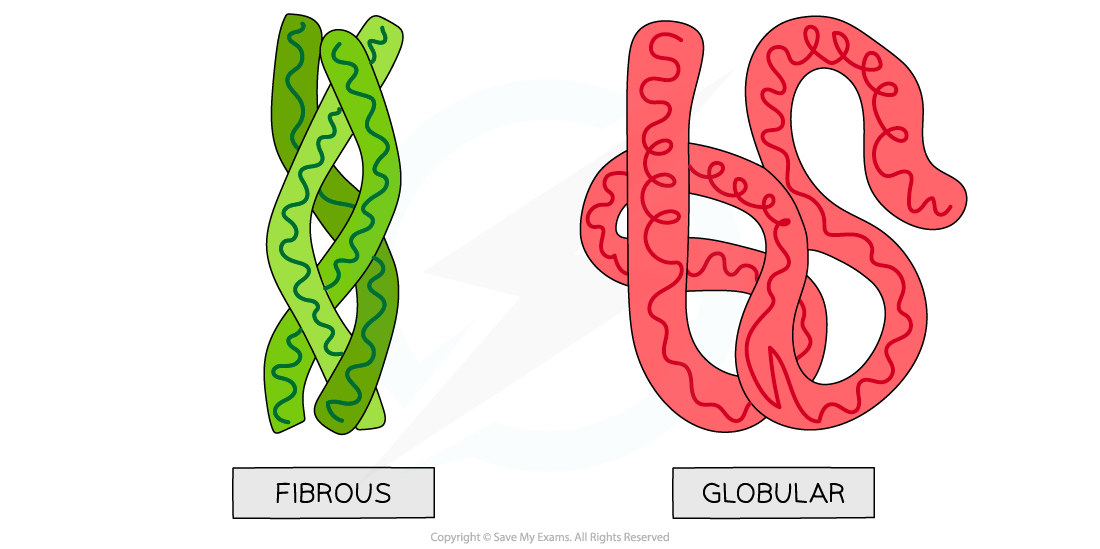Globular & Fibrous Proteins (AQA A Level Biology)
Revision Note
Written by: Lára Marie McIvor
Reviewed by: Lucy Kirkham
Proteins: Globular & Fibrous
Globular
Globular proteins are compact, roughly spherical (circular) in shape and soluble in water
Globular proteins form a spherical shape when folding into their tertiary structure because:
their non-polar hydrophobic R groups are orientated towards the centre of the protein away from the aqueous surroundings and
their polar hydrophilic R groups orientate themselves on the outside of the protein
This orientation enables globular proteins to be (generally) soluble in water as the water molecules can surround the polar hydrophilic R groups
The solubility of globular proteins in water means they play important physiological roles as they can be easily transported around organisms and be involved in metabolic reactions
The folding of the protein due to the interactions between the R groups results in globular proteins having specific shapes. This also enables globular proteins to play physiological roles, for example, enzymes can catalyse specific reactions and immunoglobulins can respond to specific antigens
Some globular proteins are conjugated proteins that contain a prosthetic group eg. haemoglobin which contains the prosthetic group called haem
Fibrous
Fibrous proteins are long strands of polypeptide chains that have cross-linkages due to hydrogen bonds
They have little or no tertiary structure
Due to the large number of hydrophobic R groups fibrous proteins are insoluble in water
Fibrous proteins have a limited number of amino acids with the sequence usually being highly repetitive
The highly repetitive sequence creates very organised structures that are strong and this along with their insolubility property, makes fibrous proteins very suitable for structural roles, for example, keratin that makes up hair, nails, horns and feathers and collagen which is a connective tissue found in skin, tendons and ligaments

Globular and fibrous protein models illustrating the roughly spherical shape of globular proteins and the long, stranded shape of fibrous proteins
Comparison of Globular & Fibrous Tertiary Proteins Table

Examiner Tips and Tricks
To distinguish between the two proteins, learn SAFES (Shape, Amino acid sequence, Function, Examples and Solubility).
Last updated:

You've read 0 of your 5 free revision notes this week
Sign up now. It’s free!
Did this page help you?

